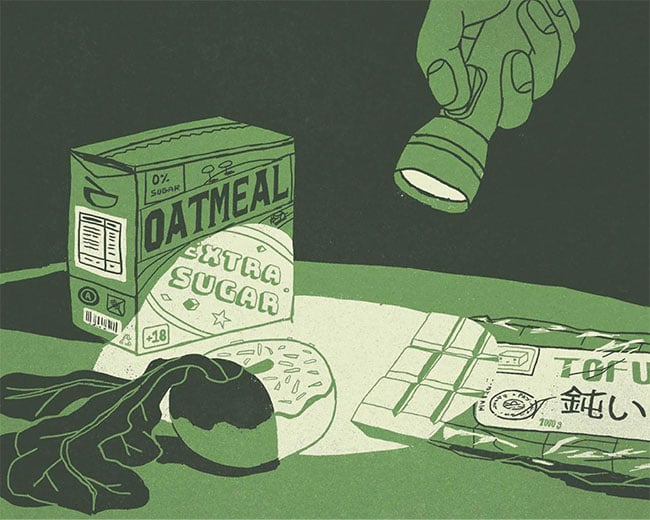
Flipping the switch on food choice
A hungry fly lands on a pile of edible goop and begins to eat. Suddenly, a green light appears in this controlled environment. What was previously just boring old slop is now deliciously sweet, and the fly eats with renewed vigor. Once the light disappears, the food returns to its original flavor.
“The fly’s experience was very real. It was a virtual taste created by directly manipulating its taste neurons,” said Carlos Ribeiro, head of the behavior and metabolism lab at the Champalimaud Centre for the Unknown in Lisbon, Portugal.

Scientists were able to change a fly’s perception of flavor using optogenetics, which may lead to discoveries
related to food choice and nutrition. Courtesy of Diogo Matias/Champalimaud Centre for the Unknown.
Ribeiro and his team developed optoPAD, a system that creates “virtual taste realities” through optogenetics. The system uses touchscreen-type technology to monitor the fly’s feeding behavior, according to José-Maria Moreira, one of the leading co-authors of the study.
By combining these technologies, the researchers were able to overcome a major hurdle in the field of feeding research. With auditory and visual information, manipulations can take place regardless of an animal’s behavior. Taste, however, is only experienced when food comes into contact with the tongue, or in this case, proboscis.
“With optoPAD, we are constantly monitoring the behavior of the fly to ensure that we optogenetically change the taste of the food precisely when the fly is in contact with it,” Moreira said.
Some may be disappointed to learn this, but the goal of the study isn’t to make the green bean casserole that Aunt Belinda brings every year to Thanksgiving dinner taste like an ice cream sundae, but rather to determine what factors go into our choices in food.
“We developed the optoPAD because we are interested in understanding how the brain makes one of the most fundamental decisions for our health: what food to eat,” said Dennis Goldschmidt, another leading co-author of the study. “But food choices do not only depend on taste. Many parts of the brain are involved, so we wanted to ensure that optoPAD can be used to study the activity of neurons anywhere.”
In flies, taste neurons are located in the mouth, making them an easy target. For purposes of comparison, the team chose a different, less accessible target — neurons at the center of the brain involved in jumping. As they expected, stimulation of the jumping neurons made the flies jump and stop eating, Goldschmidt said, showing that any neuron, regardless of location, can be studied to understand the brain’s feeding circuitry.
“The food we eat affects all aspects of our lives, including aging, ability to reproduce, lifespan, mental state, and mood,” Ribeiro said. “Yet how the brain controls food choice is still a mystery. The optoPAD can help us identify the neurons and genes that may have a direct impact on nutrition and hence our well-being in years to come.”
Published: September 2019